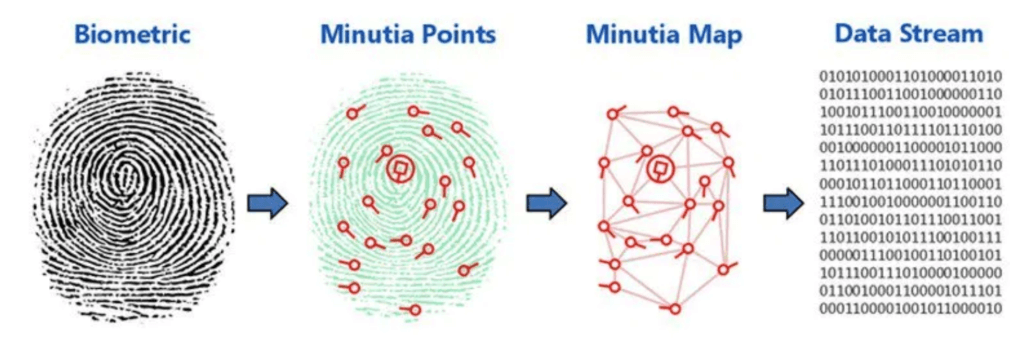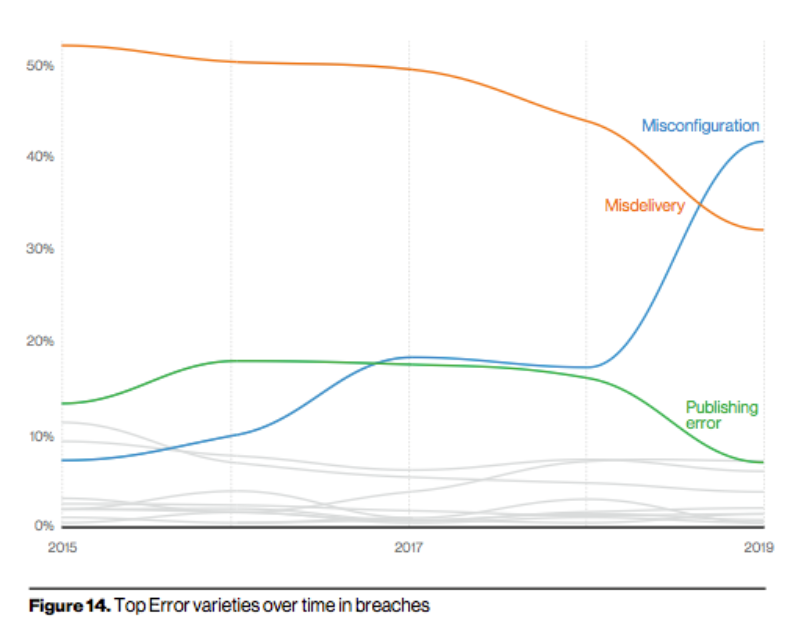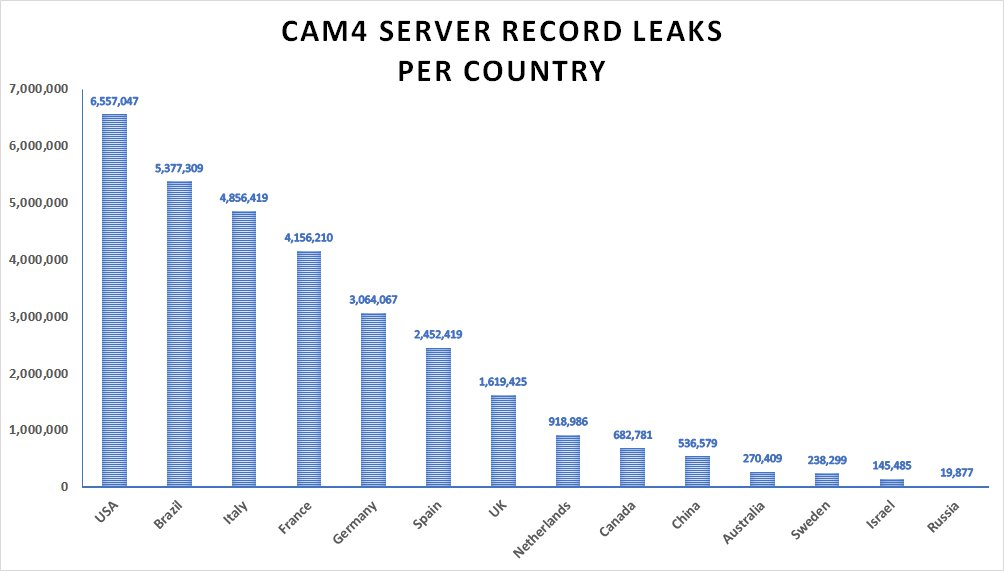We've reached the halfway mark of 2020, so it's a good time to take a look at the biggest data breaches of the year so far. And to clarify, when we say "big," we're talking about the importance of the story as much as the number of records exposed.
Each of the data breaches on this list has something to teach businesses and consumers about how sensitive data is most likely to be exposed in 2020. (Credential stuffing is a major player, but don't count out the good old-fashioned human error!)
Let's talk about 11 major breaches: what data was compromised, how it was exposed, and what we can learn from the story.
1. Marriott Suffers Another Credential-Based Breach
The Story
On March 31, 2020, Marriott posted an announcement that "an unexpected amount of guest information may have been accessed using the login credentials of two employees at a franchise property." That "unexpected amount" turned out to be the data of 5.2 million guests.
This news is particularly unfortunate for Marriott since it's only been two years since it discovered another massive breach, stemming from its acquisition of Starwood Hotels.
How the Breach Happened
We know that a hacker obtained the credentials of two employees at a Marriott property and used them to siphon data for roughly a month before being discovered. We don't know how that hacker obtained employee credentials, but credential stuffing and phishing are both likely culprits.
What Data Was Exposed
Help Net Security reports that the attacker accessed a wide range of personal data, including contact information, personal details like gender and birthday, and linked account data like airline loyalty programs.
The Lesson for Businesses
To protect customer data, you have to control how employees access data rigorously.
Marriott could have avoided this breach by implementing multi-factor authentication for employees attempting to access sensitive data. That way, it would have taken more than a password for the attacker to sneak into their systems.
In addition, Marriott could have gotten wise to the hacker's presence much sooner if their IAM system had monitored for suspicious behavior. Such a system would have flagged the situation —two employees at a franchise location accessing millions of guest records— as an anomaly that merited investigation.
2. Slickwraps and the Case of the "White Hat" Hacker
The Story
Slickwraps, a company that lets users design custom skins for their electronics, was embroiled in a data breach story The Verge called "comically bad." The breach started when someone claimed to be a "white hat" hacker who tried to alert the company about its "abysmal cybersecurity."
Unfortunately, Slickwraps ignored them, so the hacker published a now-deleted Medium post about the experience. A second hacker read this post and exploited Slickwraps' vulnerability, hacking the company. In a particularly egregious touch, the hacker then emailed all the customers to notify them that their data had been compromised.
Well that's a big old yikes from @SlickWrapspic.twitter.com/28SOEMIBZ9
— Toneman (@Toneman) February 21, 2020
How the Breach Happened
The company's phone customization tool was vulnerable to remote code execution. Users needed to be able to upload their custom photos, but Slickwraps let them upload any file to the highest directory on the server. So this hacker uploaded a file that allowed them to achieve remote code execution and execute shell commands. (In the Medium post, the hacker called this "akin to obtaining a skeleton key.")
What Data Was Exposed
Per the original hacker, the vulnerability gave them nearly free rein over Slickwraps' systems, including access to customer photos, billing and shipping addresses, admin account details, and the resumes of all employees.
The Lesson for Businesses
Get an independent security audit. And if someone points out a vulnerability, listen to them.
3. Antheus Tecnologia Biometric Data Breach
The Story
In March 2020, SafetyDetectives —a pro bono team of security researchers— revealed a breach in the data of Antheus Tecnologia, a Brazilian biometric solutions company. The company had left sensitive information, including data on 76,000 fingerprints, exposed on an unsecured server.
The server didn't store direct scans of fingerprints, but binary code that hackers could use to recreate them, with potentially disastrous consequences.
How the Breach Happened
As we mentioned, the company neglected to password protect a database on the cloud or properly encrypt it. This is almost certainly the result of human error on the part of IT staff.
What Data Was Exposed
Per Biometric Update: "The vulnerable server contained roughly 16 gigabytes of data, with 81.5 million records also including administrator login information, employee telephone numbers, email addresses, and company emails."
Antheus Tecnologia responded to the report by insisting that the exposed fingerprints belonged to their team or were in the public domain. However, they also claimed that the data was hashed, which was not the case.
The Lesson for Businesses
Password protect all sensitive data when migrating to the cloud and apply the same controls you would apply on-premises.
Some of the worst data breaches on this list result from misconfiguration errors when transitioning to the cloud. According to Verizon's 2020 Data Breach Report, errors are now the second most common source of breaches, ahead of malware and only behind the hacking. In particular, misconfiguration errors have dramatically increased since 2017, though the researchers acknowledge this is mostly due to "internet-exposed storage discovered by security researchers and unrelated third parties."
4. LiveJournal Data Breach Comes Back to Haunt Users
The Story
Back in the early days of blogging, millions of people took to LiveJournal to air their secrets, form communities, and write reams of fanfic. In May, many of those users had an unpleasant shock when Bleeping Computer reported that hackers were passing around a database containing 26 million login credentials.
The most damning part of this story is that rumors about this leak had been circulating since 2014. LiveJournal has still not publicly acknowledged the breach. That left users vulnerable, and Threatpost reports that hackers have been using the information for both credential stuffing and targeted email-based extortion.
How the Breach Happened
We don't know how hackers got access to this database.
What Data Was Exposed
The database contains email addresses, user names, and unencrypted passwords. Typically, this type of data would only have value as a tool to enable further credential stuffing attacks. However, blogging's highly personal nature means that hackers can use private drafts and messages for blackmail.
The Lesson for Businesses
Your old data practices can come back to haunt you. Storing plaintext passwords, as LiveJournal seems to have done, is a big no-no, and they should have changed their policies to keep up with best practices.
The second lesson is even more fundamental. Mistakes happen. But in the event of a breach, inform your users so they can protect their identities. How you handle a breach will be critical to navigating the incident and regaining customer trust.
The third lesson is foundational. Invest in experienced cybersecurity personnel. Even if you spend your max dollars on cybersecurity and check all the necessary boxes, you still need smart people to make sure it can all work together — and who knows what to do when it doesn't.
5. LifeLabs Breach Exposes Almost Half of Canada
The Story
In October 2019, Canadian medical testing company LifeLabs was hacked in the biggest data breach in Canadian history. (This data breach story technically came to light in December 2019, but the scandal deepened in the new year, so it still makes a list.)
The breach exposed the data of 15 million Canadians — 40% of the country's population. The company claimed that they paid to retrieve the data, but that still leaves the strong possibility that the hacker copied it. In the wake of this news, three parties filed class-action lawsuits against LifeLabs, the largest of which is for over $1 billion.
In an unfortunate coda, LifeLabs attempted to make amends by offering a year of free credit monitoring to victims. However, many Canadian customers took issue with the program, since it was operated by TransUnion, which was the victim of a recent breach.
How the Breach Happened
According to CPO Magazine, the language used in one of the lawsuits offers clues about how the breach occurred. "It alleges that the data in question was stored on unsecured servers and not encrypted. It also alleges that the network security personnel responsible for securing the data were not properly trained and that there was not enough staff."
What Data Was Exposed
Hackers compromised lab test results and national health card numbers, which revealed names, birthdates, addresses, login IDs, and passwords.
The Lesson for Businesses
Healthcare organizations need to invest more in cybersecurity and protect patient data to protect their overall health.
6. Wishbone Data Breach Puts Young Users at Risk
The Story
Wishbone is a popular social app, especially among young teens. In May, cybersecurity researchers discovered that hackers were selling a database with over 40 million user records on the dark web. This incident is particularly troubling given the young age of many of Wishbone's users and the apparent lack of appropriate safeguards for their data.
How the Breach Happened
As of yet, we don't know how the hackers gained access to the database. However, BleepingComputer reports that the hacker group "Shiny Hunters" leaked the database. Shiny Hunters have been responsible for numerous high-profile breaches, though it's unclear if they committed this breach or are merely leaking the data.
What Data Was Exposed
Researchers at Cyble found that the leaked database contained a wide variety of sensitive data, including names, email addresses, geolocation, gender, phone numbers, social media profiles, and passwords.
Experts pointed out that the severity of the breach could have been limited if the data had been appropriately encrypted. Wishbone used MD5 password hashing, which is considered weak.
The Lesson for Businesses
Securing your product takes more than buying the right firewall; it's about building a security culture.
That work starts by classifying the sensitivity of your company's assets; then, you can prioritize those to protect. Once you understand the value of your data, you can apply the required degree of security control. In the case of Wishbone, minors' personal data is very sensitive and should have been protected with a much stricter policy.
Remember, those data assets have real value to attackers, who are organized, motivated, and continuously evolving.
Verizon's 2020 report found that organized criminal groups committed 55 % of breaches, and 86% were financially motivated, knowing that any company that collects and deals in data must take the threat seriously. Building a security culture means accounting for threats in every decision you make about your company's data.
7. Nintendo Is the Latest Victim of Credential Stuffing in Media
The Story
In April 2020, Nintendo announced that 160,000 accounts had been breached in a presumptive credential stuffing attack. Hackers had apparently been using the hijacked accounts to buy coveted digital items.
As a result of the breach, Nintendo discontinued the practice of letting users log in with their Nintendo Network ID (NNID). The company also recommended that users enable two-factor authentication to protect their data.
Nintendo is only the most recent victim of credential stuffing attacks targeting digital media. Netflix, Spotify, and Disney+ have all had similar issues in recent months and years.
What Data Was Exposed
Once hackers gained access to Nintendo accounts, they could make purchases and view sensitive data like email address, birth date, and country.
How the Breach Happened
Nintendo said the compromised credentials were "obtained illegally by some means other than our service." That strongly suggests that the affected users weren't using unique IDs and passwords. So when their credentials were breached in another attack, hackers could use them to break into their Nintendo accounts.
The Lesson for Businesses
Require multi-factor authentication. Your users will thank you in the long term.
8. Shocking Revelations From an Australian Football Data Breach
BigFooty.com is a popular app where fans of Australian football can chat about their favorite sport (which is not to be confused with American or international sports, also called football). But in late May, the public learned that this seemingly innocuous app had a dark side. SafetyDetectives discovered 132GB of sensitive data published on an Elasticsearch database.
The exposed data included private messages, many of which contained racism, and other offensive and damaging content. Furthermore, SafetyDetectives reported that many of these messages could be traced to individual users, including "Australian police officers and government employees." If malicious actors found the database, they could use this material to commit blackmail or other forms of coercion.
SafetyDetectives contacted BigFooty's web host, Amazon Web Services, and the Australian Cyber Security Centre, who quickly shut down the server. BigFooty later posted about the breach, acknowledging that "there was some unwanted interaction by unauthorized people," but "we currently do not believe that the whole index was downloaded."
How the Breach Happened
This is another case of a misconfigured database leaving sensitive information exposed on the web.
What Data Was Exposed
Many of BigFooty's users weren't registered under their real names, and this may have given both users and the site's admins the false notion that their behavior on the site was anonymous. However, many users shared identifiable information via messages, such as their passwords for live streams, phone numbers, email addresses, and personal information.
Furthermore, the breach also exposed IP addresses, and GPS data, so motivated hackers could still trace information back to individuals and use shared passwords to take over more accounts.
The Lesson for Businesses
Identify your highest-risk data and exercise tight control over who can access it.
Storing private messages between users on your servers is like storing dynamite in your basement. No one who lacks the appropriate training and oversight should be able to interact with it. For businesses, comprehensive cybersecurity means controlling access to personal information via centralized identity management.
9. CAM4 Exposes 10.88 Billion Records
The Story
This adult webcam platform inadvertently left a database full of extremely sensitive information available on the web without password protection. Again, we have SafetyDetectives to thank for finding the vulnerability and sounding the alarm before malicious actors could steal the data.
This data breach story shares some characteristics with the BigFooty leak, but there are some important distinctions. One might assume that seven terabytes of private data leaked from a site of this nature would do more damage than chats from a sports app. Still, there's no evidence any malicious actors exploited the vulnerability.
Furthermore, CAM4 responded promptly and transparently to the breach, though they did claim that only a tiny fraction of the exposed records could have been traced to specific individuals.
What Data Was Exposed
The types of personally identifiable information exposed in this breach are quite alarming, including full names, email addresses, sexual orientation, and chats. SafetyDetectives reported finding 11 million records, including emails, which allowed their team to divide affected users by country.
The Lesson for Businesses
Conduct a data audit to understand where all your data lives and how it is protected. According to Kevin Krieg, technical director of the company which manages CAM4's database: "It's a server that should not have an outward facing IP in the first place." This is a common mistake and why having an asset inventory is in the CIS Top 20.
You could also understand your attack surface the best you can, what does your company publicly expose? What will an attacker find if they start researching you? Some tools will help you mine OSINT, or you can also have an external red team penetration test from a third party.
10. ExecuPharm Data Stolen and Published in a Ransomware Attack
The Story
On March 13, hackers with the CLOP ransomware group launched a ransomware attack against ExecuPharm, a pharmaceutical research company.
Once inside, the hackers encrypted the data on the affected servers and demanded a ransom to decrypt it. Not only that, but they also threatened to publish the stolen data on the dark web if they weren't paid. In April, it appears CLOP made good on this threat. TechCrunch reported that they found "a vast cache of data, including thousands of emails, financial and accounting records, user documents, and database backups, stolen from ExecuPharm's systems."
Despite the threats, ExecuPharm's response to the attack has been laudable. They informed Vermont's attorney general of the breach in April and worked hard to improve security. The company reports that they hired third-party security firms to advise them, instituted "forced password resets, multi-factor authentication for remote access, and endpoint protection, detection, and response tools."
How the Breach Happened
According to CISO MAG, the hackers gained access to ExecuPharm via a phishing campaign targeted at ExecuPharm employees.
What Data Was Exposed
In ExecuPharm's letter to the Vermont AG, they disclosed that the hackers could have accessed employee files containing personal information ranging from social security numbers to bank and credit card numbers.
The Lesson for Businesses
Lesson one: Take employee cybersecurity training seriously to guard against phishing attacks. Sending out periodic reminders not to click on suspicious links isn't enough.
Lesson two: The data breach is only half the story. Your company's response is the other half. ExecuPharm did everything right in handling this breach. They contacted the authorities, immediately improved their security protocols, and refused to play ball with hackers. The result is that, while ExecuPharm may experience some financial damage from this hack, the reputational fallout will be limited.
11. EasyJet Customers Hit Hard
The Story
In May 2020, low-cost airline EasyJet revealed that a "highly-sophisticated attacker" stole 9 million customers' personal data. In response, law firm PGMBM filed a class action lawsuit under the GDPR for £18bn. EasyJet has faced intense criticism for failing to protect data and for waiting several months to inform customers of the breach. However, legal observers predict that the company will face a lighter fine since the airline industry is already struggling to survive during the Coronavirus pandemic.
How the Breach Happened
EasyJet has not released any details about how its systems were breached, except to say that the hacker(s) seemed to be after the company's intellectual property, as opposed to its customer's personal data.
What Data Was Exposed
There were two classes of victims in the EasyJet breach. The first was the 9 million customers whose email addresses, names, and travel records were exposed. These customers may now be vulnerable to phishing attacks, and possibly more aggressive targeted attacks based on their travel history.
In addition, roughly 2,200 customers had their credit card details exposed, including the three-digit CVV code on the backs of their cards, which could expose them to theft.
The Lesson for Businesses
Anticipate public perception. EasyJet learned of the attack in January and informed the Information Commissioner's Office (ICO) as required, but didn't tell their customers for four months. Even if EasyJetupheld its legal responsibility and the company is correct that the hacker wasn't interested in customer data, they still damaged their customers' trust by waiting so long to go public.
The Biggest Data Breaches of 2020 May Be Yet to Come
With half the year left, there's no doubt that many of the defining cybersecurity stories haven't broken yet. It's equally certain that many of the breaches we'll be learning about in the coming months have already happened.
Data breaches will be a fact of life for as long as people make mistakes, whether that's misconfiguring a database or using the same password for their bank account that they used for their old LiveJournal blog. But hopefully, these stories have given you a sense of the most common mistakes that lead to breaches. That way, you'll know what to look for—and ensure that the next story on this list isn't yours.
About Auth0
Auth0 by Okta takes a modern approach to customer identity and enables organizations to provide secure access to any application, for any user. Auth0 is a highly customizable platform that is as simple as development teams want, and as flexible as they need. Safeguarding billions of login transactions each month, Auth0 delivers convenience, privacy, and security so customers can focus on innovation. For more information, visit https://auth0.com.








